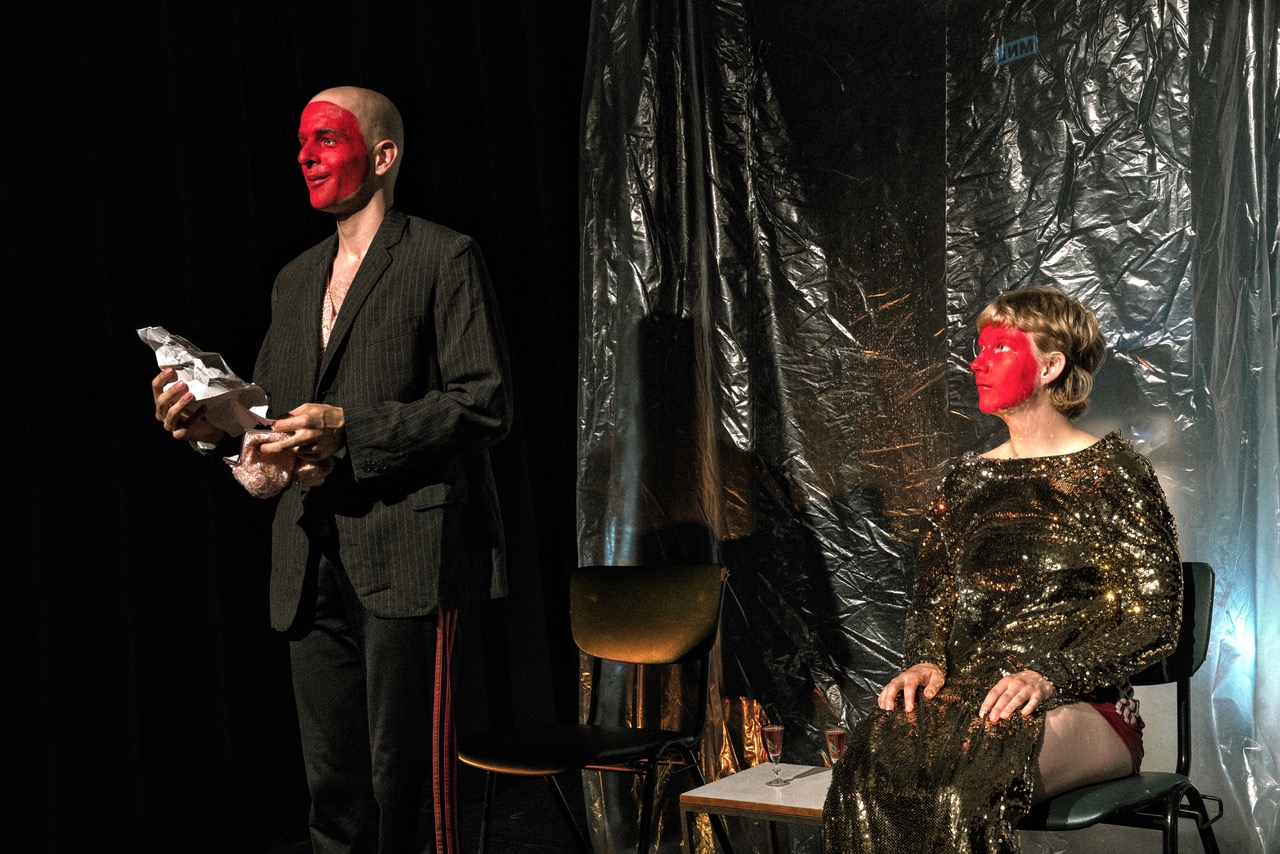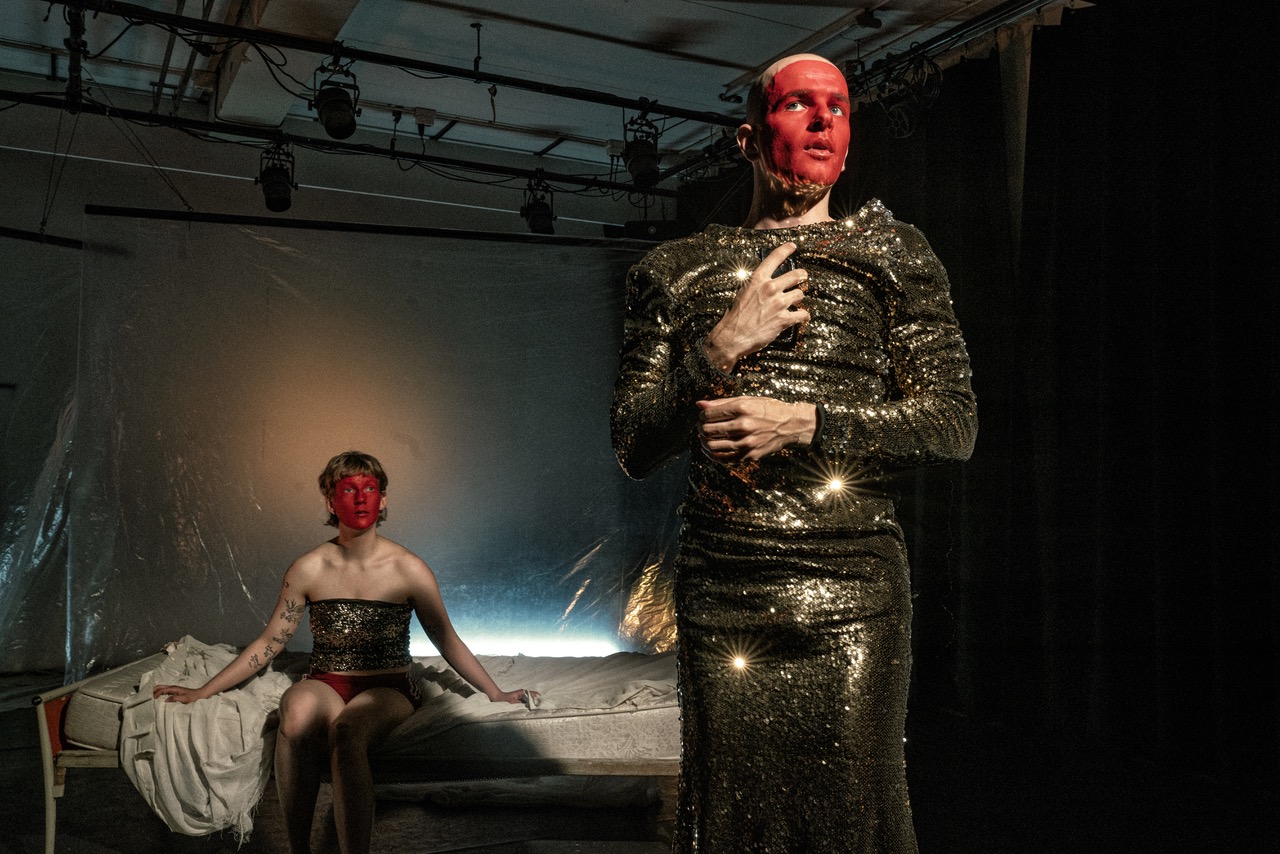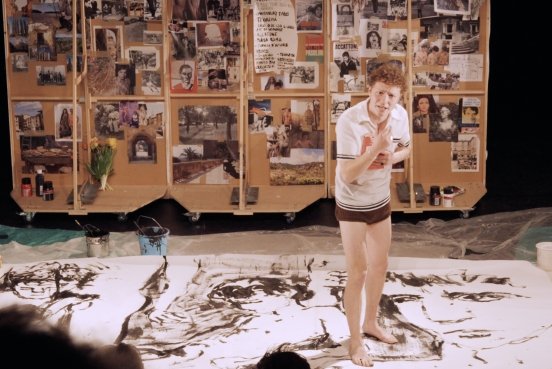The power of interdisciplinary work in theatre and dance
- Dance
- Theatre
At ArtEZ, theatre and dance converge in a remarkable way. The growing collaboration between the Dance Artist and School of Acting programmes offers students a unique opportunity to elevate their physical expression and stage presence. Here, the magic of interdisciplinary work comes to life - where the boundaries between dance and theatre blur, encouraging students to discover themselves as versatile performers.

What makes this collaboration so powerful? It’s the dialogue that emerges between disciplines. For Dance Artist students, the focus is on developing performativity - the ability to tell a story through movement. For School of Acting students, it’s about mastering the physicality of acting - learning to use the body as an expressive instrument. Together, they create a space where dancers and actors complement, inspire, and challenge one another.
A shared journey
Through classes and projects, students don’t just encounter new techniques but also new perspectives. Dancers and actors work together, learn from each other’s expertise, and grow through a creative exchange that enriches their artistry. The collaboration between faculty members from both programmes, such as Hendrik Aerts from the School of Acting and Reut Aviran from Dance Artist, strengthens this cross-pollination of ideas and techniques. The result? Students who not only deepen their own discipline but also experience the power of interdisciplinary work. They learn that dance and theatre don’t exclude one another but instead enhance and elevate each other.
Dancers and actors are working together more than ever. Interdisciplinary work is becoming the norm rather than the exception.”
“The collaboration between actors and dancers is about enriching each other’s craft through interdisciplinarity,” adds Hendrik Aerts. “The goal isn’t to fully master each other’s technique but to understand each other’s ‘language’ and learn from it. Actors and dancers maintain their own expertise, but they influence and inspire one another in their approach: actors develop an abstract physical awareness, while dancers refine their ability to engage with contact and psychology. Through physical training and improvisation, actors learn to deepen their performance and become more physically expressive, while dancers gain a broader conceptual framework and interactive presence. By exploring these elements together, a balance emerges between abstraction and intention, thought and physical action. This exchange creates more well-rounded performers and fosters a synergistic collaboration.”
A collaboration between alumni: Sytze Bouma and Sofia Norman
One inspiring example of this interdisciplinary approach is the collaboration between School of Acting alumnus Sytze Bouma and Dance Artist graduate Sofia Norman. Sytze recalls his first encounter with dancers in his early training: “In my first year, we had a class together called ‘kinesthetic awareness’. That was when I began to understand how crucial it is, especially for actors, to truly know and use their bodies as an instrument.”
Embracing physicality
By his second year, Sytze started experiencing the impact of dance more profoundly: “During dynamic training classes, I first discovered a sense of physical expression. Later, in the duet project, this was taken to a whole new level. It was a journey of discovery that shifted my perspective on my own body and reinforced how essential physicality is in storytelling.”

Beyond words and text
In his third year, Sytze encountered Sofia Norman’s work. “Sofia created a performance where she handed the audience a pair of headphones and asked them to shake hands with a partner. The handshake lasted as long as the music played. That was the first time I truly felt the power of performative presence. It wasn’t about words or dialogue - it was about the physical experience you create.”
This moment sparked something in Sytze, inspiring him to collaborate with Sofia on their joint graduation project: ONDIER. In this duet, they explored the interplay between language and movement, the physical and the emotional. Their performance, infused with experimentation in form and expression, became a meeting point for their artistic visions.
Creators who perform, performers who create
“What I learned from working with Sofia", says Sytze, “is how vital it is to embrace different perspectives. We were both creators and performers. We gave each other feedback, made each other stronger. It was a process of discovery and growth, where I learned so much about myself.”
For Sytze, this collaboration was pivotal in his development as both a creator and a performer. It pushed his creative boundaries and allowed him to work with someone who approached performance from a completely different angle.
We were both the creator and the performer, which led to an exciting exchange. We challenged each other, supported each other, and grew together.”
Sytze’s future plans
Since graduating, Sytze has remained active as both a performer and a creator. He is currently working on a new solo performance, where he once again takes on both roles. The piece, written and created by Sytze, tells the story of a drag performer who grew up in his parents’ house in Amsterdam. It will premiere in March at the Café Theater Festival in Utrecht, directed by Mara van Vlijmen. “The physical aspect of my work will always be part of who I am as a maker,” says Sytze. “It’s an integral part of how I tell stories.”
Last season, Sytze performed with MAAS Theatre and Dance, working alongside dancers, mime artists, and actors. This spring, he will join KASKO as part of another interdisciplinary ensemble, collaborating with singers, dancers, and actors. “I continue working across disciplines because this cross-pollination always inspires me.”

A unique opportunity for prospective students
For prospective students looking to push their physical and performative boundaries, the collaboration between the Theatre School and Dance Artist programme offers a unique opportunity. In this environment, disciplines merge, allowing students to grow not only as individuals but also as part of a collective. They gain the tools to develop into versatile, multidisciplinary artists who evolve physically, creatively, and personally.


